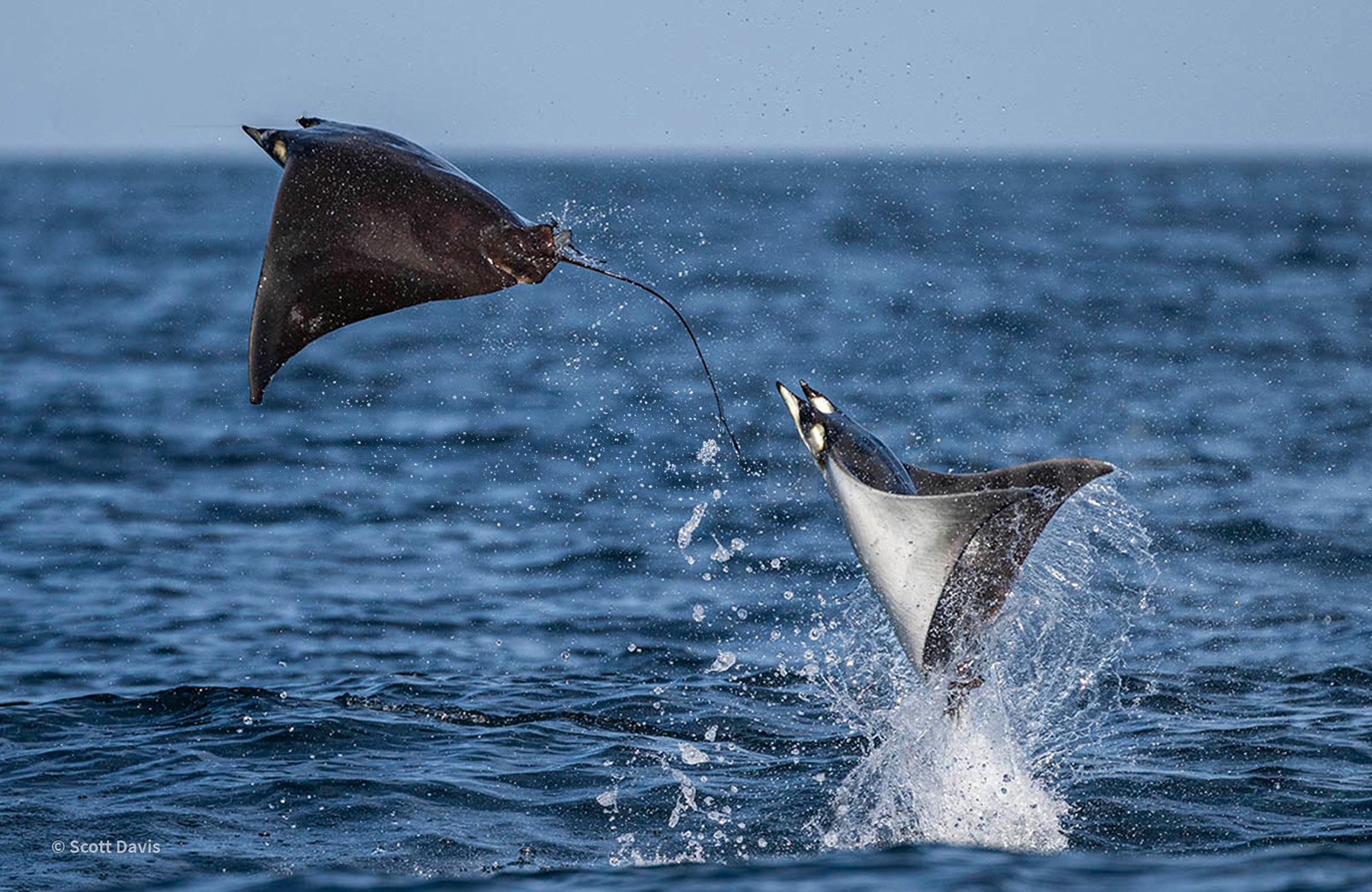Mobula Rays & Orcas | Sea of Cortez
Mexico
£2,860
US$3,830
2nd - 9th July, 2027 hosted by Aqua-Firma Marine Scientist, Charlotte Caffrey from US$2,880
Mobula Rays are one of the most iconic species across their ranges, gracefully “flying” through the water as they swim, swarming into huge schools and sometimes leaping out of the water in incredible breaching displays, giving rise to their nickname of Flying Rays.

There are 9 species of Mobula Ray, most of which live in tropical and sub-tropical waters around the world. They range considerably in size, with the smallest species, the Longhorned Pygmy Devil Ray, growing up to 3.3 feet (1 m) wide; and the largest species, the Devil Fish, growing up to 17 feet (5.2 m) wide. Only a Manta Ray grows larger.
Mobula Rays are similar in appearance to Manta Rays, with their bodies flattened and in a diamond-like shape. This makes it naturally difficult for potential predators to bite Mobula Rays in areas where vital organs are located, so bites are most commonly found on their wings.
Mobula Rays and Manta Rays were assumed to be in separate genuses (genera), with the Latin name for Mobula Rays beginning Mobula and Manta for Manta Rays. Recent genetic studies have revealed that they are within the same genus, so what was Manta birostris (the Giant Manta Ray) and Manta alfredi (the Reef Manta) are now Mobula birostris and Mobula alfredi. Same by name and genus, but morphologically, Mobulas and Mantas have many differences which mainly involve their mouth and head fin (cephalic fin) structures. Mobula Rays have an undercut bottom jaw while the jaws of Manta Rays are aligned evenly. The cephalic fins look like horns when rolled up in Mobula Rays, giving them the name “Devil Rays”; and these fins are smaller than those of Manta Rays when unfurled.
Despite the similarities between Mantas and Mobulas, there is relatively little known about Mobula Rays. This is mainly due to their far shyer nature, making them more difficult for divers to approach. The Sicklefin Devil Ray, however, is known for being approachable by divers. This species of Mobula Ray is easily identifiable due to its olive-green or brown colour.
Mobula Rays have evolved a wide array of feeding techniques to maximise their feeding efficiency. These are enabled by the cephalic fins which funnel water holding plankton and other food into the mouth of the ray. Water is filtered through feathered gill plates which surround each gill slit, capturing anything larger than a grain of rice and redirecting it towards the throat.
The feeding techniques used by Mobula Rays include:
All species of Mobula Ray are endangered apart from Munk’s Pygmy Devil Ray, which is vulnerable to extinction. The most significant reason for this conservation status is the rising prices and demand for gill plates for use in traditional Chinese medicine. Other factors which have led to declines in ray populations include habitat destruction and accidental capture in fishing nets.
The best opportunity to see Mobula Rays is on our Mobula Rays & Orcas Voyages to the Sea of Cortez. You can hope to see schools of literally thousands of mobulas, swimming en masse and exhibiting some spectacular breaching. We also often see fast moving schools of Mobula Rays on our Whale Shark Research – Islands, Marine Life & Lemurs trips to Madagascar.